In this guide, we’ll take you step-by-step through the process of establishing your own Etsy shop and offer improved methods for getting started.
1. Determine what products to sell on Etsy
Whether it’s crafting handmade jewelry, curating vintage clothing, or crafting personalized gifts, select something that resonates with your passions, expertise, and target audience. Consider launching an Etsy shop as a long-term commitment, rather than rushing into it simply because others are doing so and profiting early.
What can be sold on Etsy?
- Handmade goods: like handcrafted embroidery or ceramics.
- Vintage items: Vintage pieces must be at least 20 years old, such as certain antique speakers or books.
- Crafting supplies: Crafting materials, tools, or ingredients. For instance, some party supplies can also be categorized as crafting supplies.
What’s prohibited on Etsy?
- Contraband: including tobacco, weapons, etc. Refer to Etsy’s contraband policy for specifics.
You can gauge product sales and search trends using tools such as EtsyHunt or Google Trends. To delve deeper into product design and pricing for customization, utilize EtsyHunt’s keyword search to identify competitors easily.
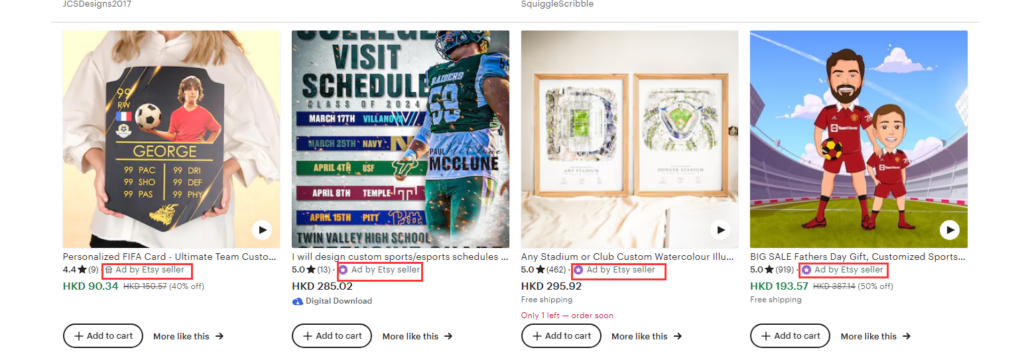
When using Etsy’s search function to explore trending products, remember to filter out items with the “ads” logo, as they may not be relevant to your research.
2. Create your store
The initial step in establishing an Etsy shop entails creating an account on the platform. Ensure you input accurate information since it will be linked to your shop. Click on your avatar and then tap the “Sell on Etsy” button to initiate the registration process.
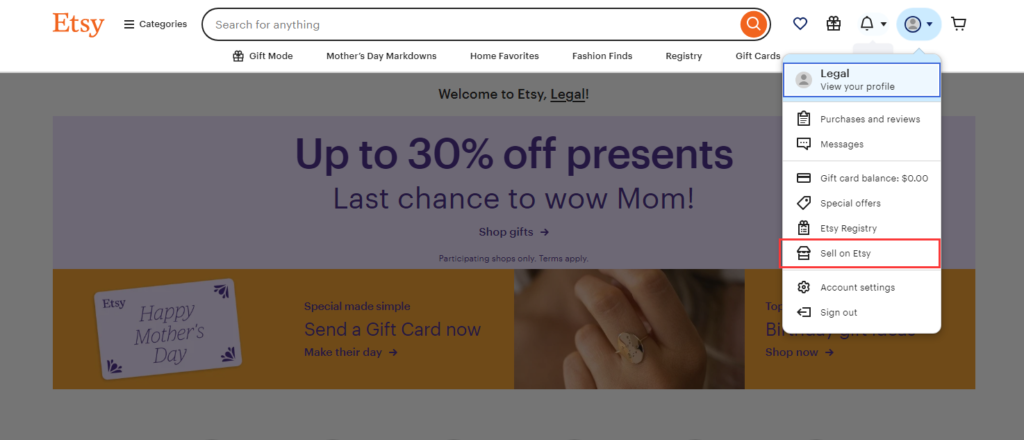
Shop Preferences:
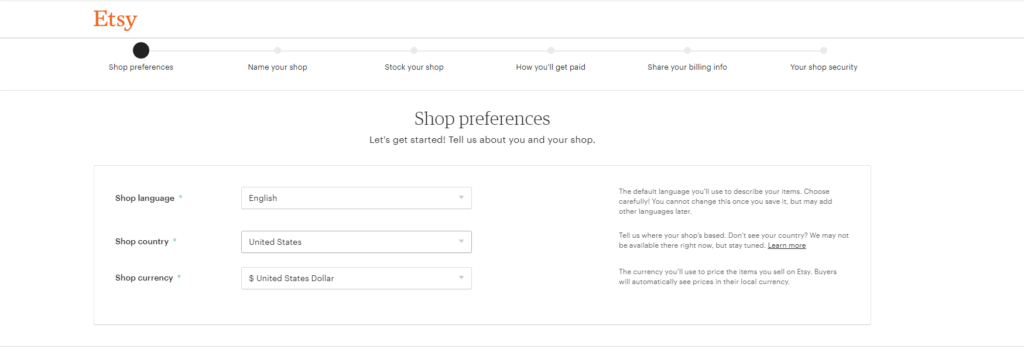
- Shop Language: Choose your shop language based on your target market. Note that this setting cannot be modified once saved.
- Shop Country: Select the country where your store is located, typically where you are situated.
- Shop Currency: Opt for the currency that aligns with your store’s target market. If targeting a global audience, USD is recommended, as the currency will adjust automatically based on your customers’ location.
Name Your Shop: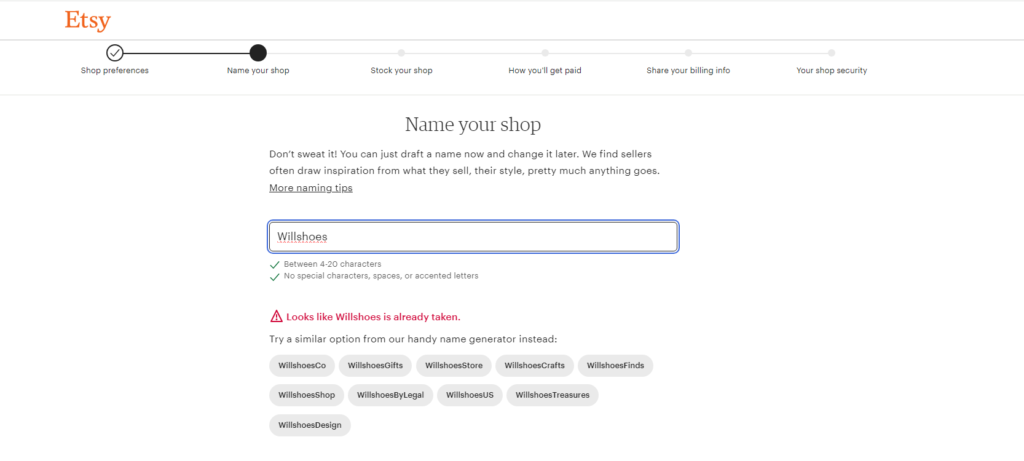
- Your shop name should be 4–20 characters long and devoid of special characters, spaces, or accented letters. If you’re struggling for ideas or your desired name is taken, Etsy will suggest similar alternatives. Your shop name should ideally reflect the products you offer or your brand.
Stock Your Shop:
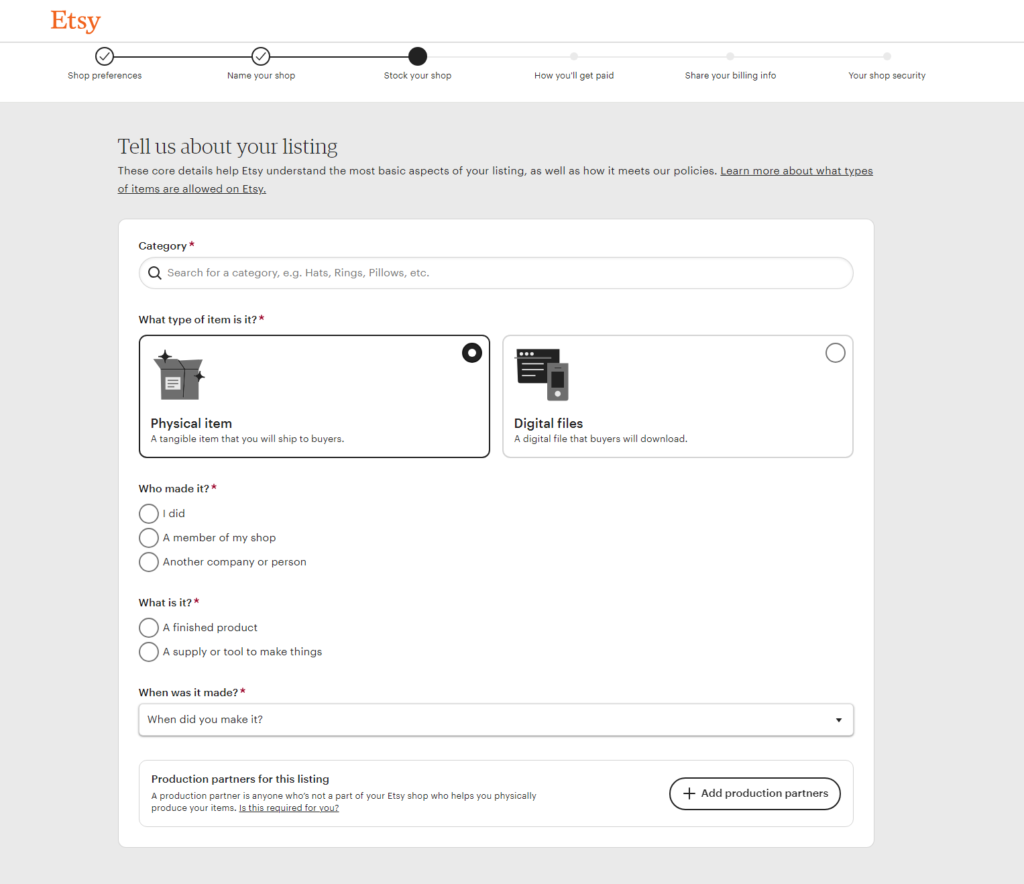
This step involves uploading products, whether they are physical items or digital files. Ensure to include:
- Product price
- Product description
- Tags
- Product images
- Refund policy
- Shipping information
Complete all mandatory fields before proceeding.
For guidance on creating compelling product listings, consider checking out Etsy SEO.
P.S. To expedite the review process for your store, we recommend uploading handmade and unique products. This increases the likelihood of your store being approved swiftly.
3. Enter your payment settings
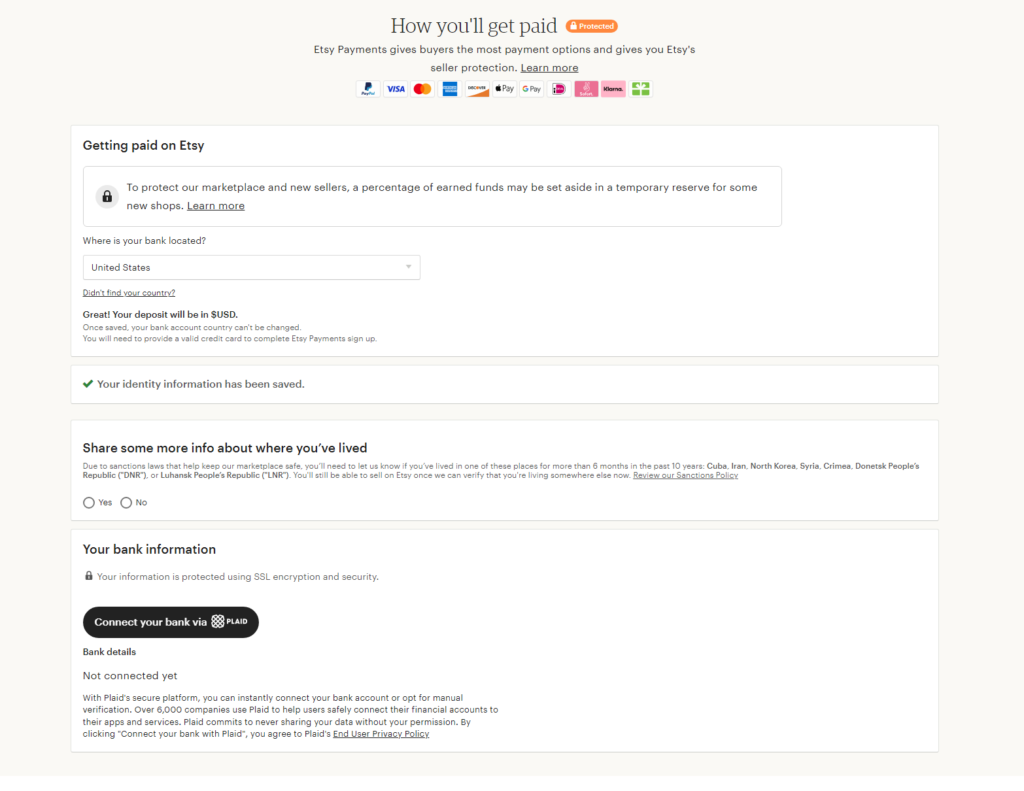
You must indicate whether you’re an individual seller or a business.
- If you select “Individual or Sole Proprietorship,” provide your country, full name, date of birth, address, phone number, and the last four digits of your Social Security number.
- Businesses should input the legal entity name, legal business address, state, business registration number, and employer identification number (EIN).
After completing this section, select the country where your bank is located.
Once your payment account is set up, you’ll need to link a payment method to cover your Etsy fees. Input your credit card number, Card Code Verification (CCV), expiration date, and full name on the card. For peace of mind, opt for automatic billing; Etsy will automatically charge your card on the first of the month or when you exceed your fee threshold. Otherwise, you can pay anytime between the 1st and 15th of each month. Failure to make a payment may result in your store being suspended.
As a seller, you are responsible for the following fees:
- A one-time store opening fee of US$15.
- A product listing fee of $0.20 per item.
- A sales transaction fee of 6.5% of the item price, including shipping.
- A payment processing fee (applicable if using Etsy Payments) of 3% of the item price, plus $0.25 for each Etsy payment.
- If you list items in a currency different from your payment bank account’s currency, Etsy will convert funds from Etsy Payments to your payment account’s currency, incurring a 2.5% conversion fee when necessary.
4. Customize your storefront
After completing payment and two-factor authentication and awaiting approval, you can access your store manager.

Next, you can customize your store’s design. While Etsy offers less flexibility compared to Shopify, you can still establish a branded store. I highly recommend aligning your store’s style with your social media presence to reinforce your brand image.
In the Shop Manager, you can decorate your shop in two areas: Settings and “Etsy” under Sales Channels.
- Banner: Take inspiration from top competitors.
- Store logo: Simply upload your brand logo.
- Shop Announcement: Share a brief welcome message with shoppers.
- Message to the buyer: This will be displayed in the email and payment page after a buyer places an order. You can include product tips or warm messages.
- Order Receipt Banner: Enhance your brand image by adding a branded banner to the buyer’s payment page.
- Story: Share a video or photo detailing the story behind your product, your business growth journey, and your brand vision. This content will engage customers with your brand.
- Shop Members: Introduce other team members or collaborators.
- Shop Policies: Clearly outline shipping, returns, exchanges, payments, custom merchandise policies, or any other essential guidelines for shoppers. Every store’s policies vary, so tailor them to your situation.
- Shipping Profile: If offering free shipping, incorporate shipping costs into the product cost. If your product doesn’t include free shipping, decide on the shipping fee you wish to charge and establish a shipping profile. Additionally, add your sales market to the shipping profile. Note that buyers excluded from your shipping profile won’t be able to purchase your products.
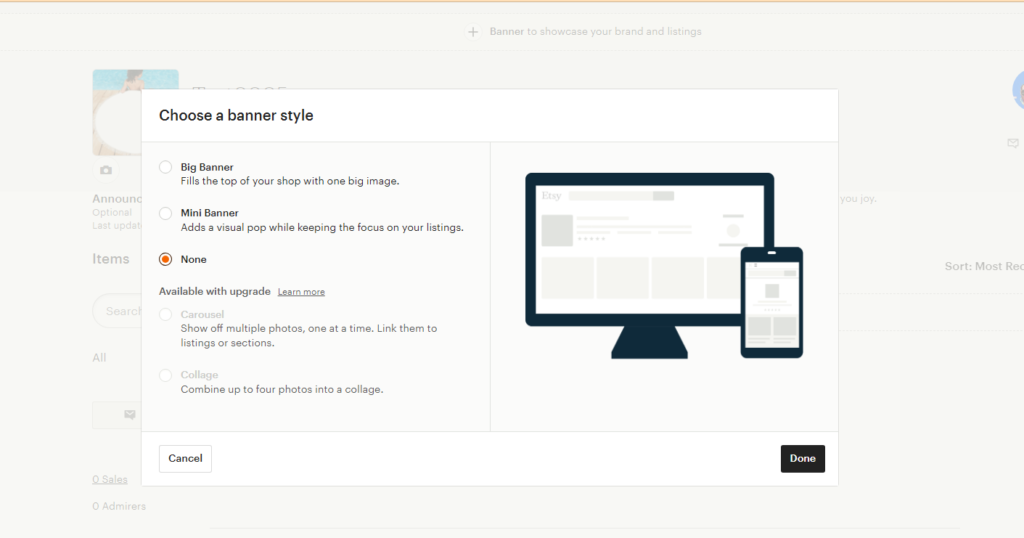
5. Add some listings
Now that your store is live, it’s time to start creating listings for your products. Ensure each listing includes a detailed description, pricing information, and clear photos showcasing your product from various angles. The more listings you have, the greater the opportunities for customers to discover your products.
For optimal product listings, pay attention to the following, as outlined in the Etsy guide:
- Use titles and tags effectively to optimize Etsy searches.
- Capture high-quality listing photos.
- Incorporate attributes to aid shoppers in finding your products.
- Craft compelling product descriptions to pique shoppers’ interest.
- Specify accurate processing times to inform shoppers of when they can expect their items.
- Decide on shipping costs or offer free shipping options.
Keep Etsy SEO in mind when crafting product titles and tags to attract more traffic and drive sales.
6. Promote your store
To boost your store’s traffic, the first step is to increase its visibility so more people can see your products. It’s akin to opening a shop on a deserted street and wondering why no one’s stopping by after a month—it’s not necessarily the product’s fault but rather a lack of exposure.
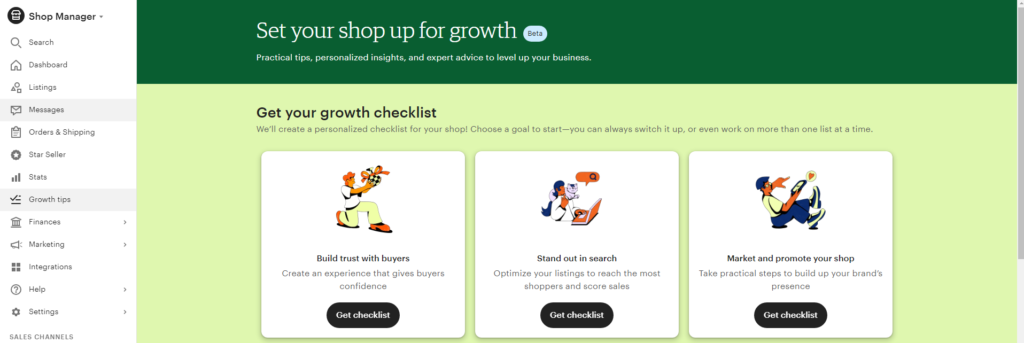
Expand your reach and drive traffic to your store through social media and paid advertising, or optimize your listings for relevant keywords and improve your search ranking.
Social Media and Paid Advertising
Social media serves as a powerful tool for publicity, with platforms like TikTok, Instagram, Pinterest, and Facebook being particularly effective. YouTube isn’t emphasized here because it’s primarily a tutorial video platform, not necessarily where your target audience might be.
Your social media content should spotlight your product’s features, whether through videos or images. Consider posting content such as:
- Highlighting product features
- Showcasing the manufacturing process
- Sharing recent events related to your products or industry
- Offering discounts on your products
As a seller, you can also run keyword ads on Etsy to boost visibility. Keep in mind that advertising incurs costs, so factor this into your product pricing strategy. Generally, pricing should cover product and shipping costs, with profit margins adjusted by 15%-30% to offset advertising expenses and ensure profitability.
As a beginner, you may encounter challenges with the return on investment. To optimize your efforts, focus on key areas such as product titles, images, pricing, and whether to offer free shipping. These elements play crucial roles in attracting customers and maximizing your advertising ROI.
SEO (Search Engine Optimization)
Etsy SEO is one of the easy and lasting ways to attract accurate customers. The basic principles of Etsy SEO are similar to those of Google SEO, but it is easier than Google SEO.
Etsy SEO mainly involves product titles, tags, multiple attributes, categories, and descriptions. Regarding how to use Etsy SEO well, you can check the article about Etsy SEO.
7. Manage your Etsy shop
Manage orders
When managing orders on Etsy, there are two fulfillment options: fulfilling orders yourself or using a production partner. If you opt for the latter, it’s crucial to add a production partner for each product to avoid the risk of store suspension.
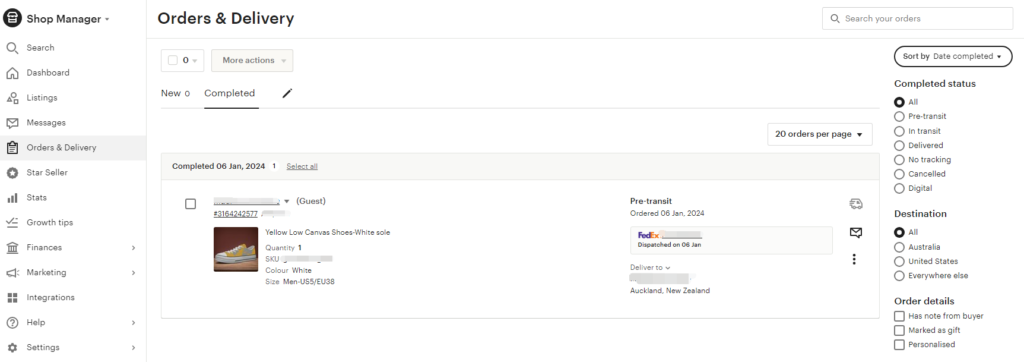
For beginners who lack physical products but possess strong design skills, utilizing a print-on-demand service like JetPrint can be advantageous. With JetPrint, you design the product, and they handle the rest, including production. Orders are seamlessly synced to your JetPrint account, allowing for continuous design experimentation.
If managing inventory has been a challenge, consider this approach:
1. Calculate your average daily sales quantity by dividing the quantity of products sold in a week or month by the number of sales days.
2. Multiply the average daily sales quantity by one month and then by 20% to determine the additional inventory needed for the next month.
3. If your order quantity increases by 20% compared to the previous month, increase your inventory by 40% of the previous month’s quantity next month.
JetPrint print on demand service eliminates the need for inventory management, as they produce items only when orders are placed, ensuring cost-effectiveness and minimal risk.
Customer service
In terms of customer service, prioritize prompt responses to inquiries, providing accurate product information, and swiftly addressing any concerns. Satisfied customers are more likely to leave positive reviews and recommend your store, contributing to increased sales and establishing you as an Etsy “star seller.”
While timely responses are essential, focus on providing solutions rather than worrying about delayed replies. Buyers are primarily concerned with problem resolution rather than response time. Additionally, ignore spam messages to avoid distractions ( You may receive some spam messages; they may be fake official personnel, or they may be boring people who keep sending advertisements. Ignore these messages, as they will distract you.)
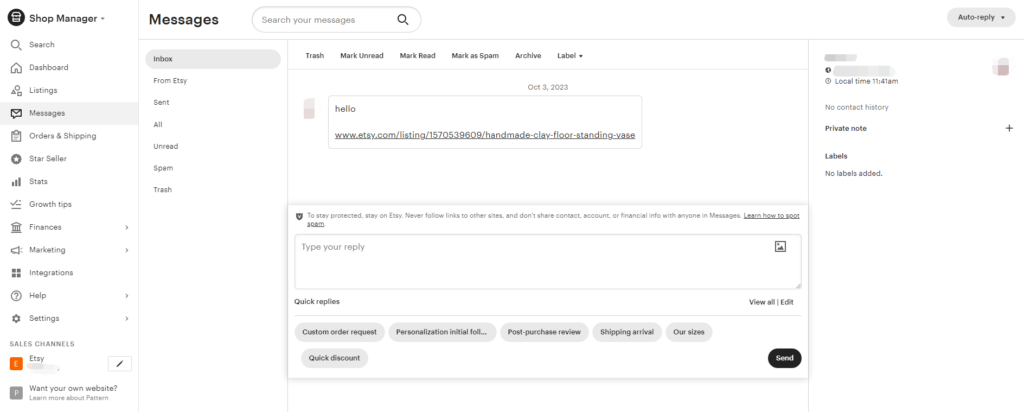
Remember that customer service extends to managing reviews. Don’t be disheartened by negative reviews; instead, view them as opportunities for improvement. Respond professionally to address concerns and demonstrate your commitment to customer satisfaction. Embrace challenges as opportunities for business growth and improvement.
Conclusion
Starting an Etsy shop may appear daunting initially, but with the right guidance and determination, you can transform your entrepreneurial aspirations into a thriving reality. By adhering to these seven steps and remaining faithful to your products, you’ll pave the path to establishing a prosperous Etsy shop.
Maintain focus, exercise patience, and prioritize your customers’ needs above all else.If you are considering a print-on-demand service, JetPrint offers additional branding services to enhance the presentation of your brand.
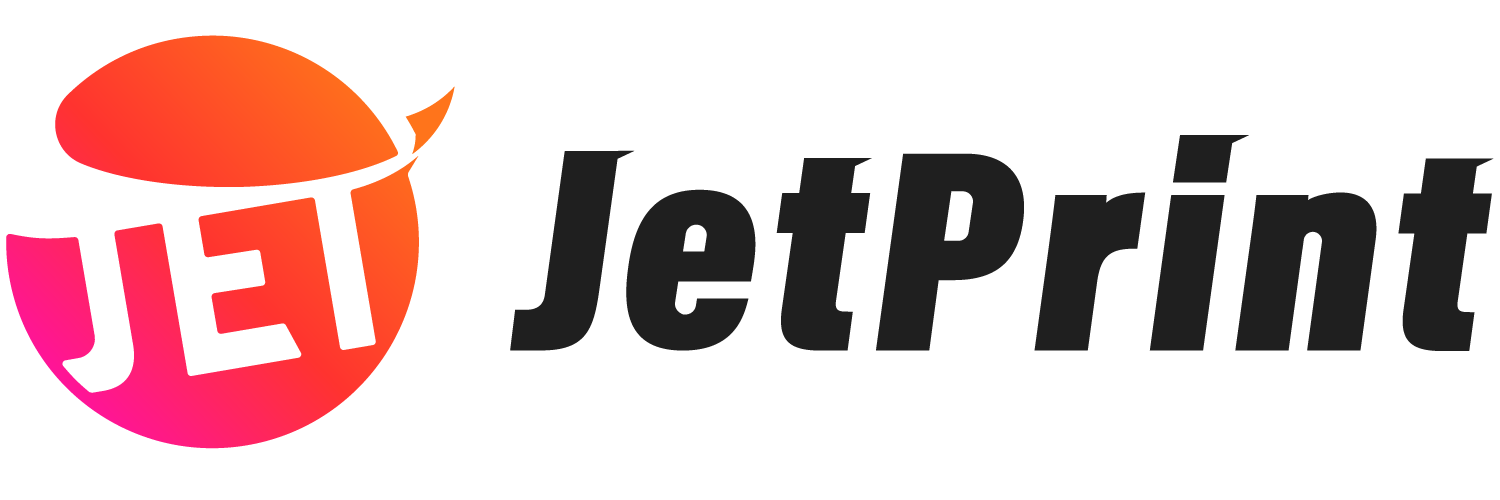
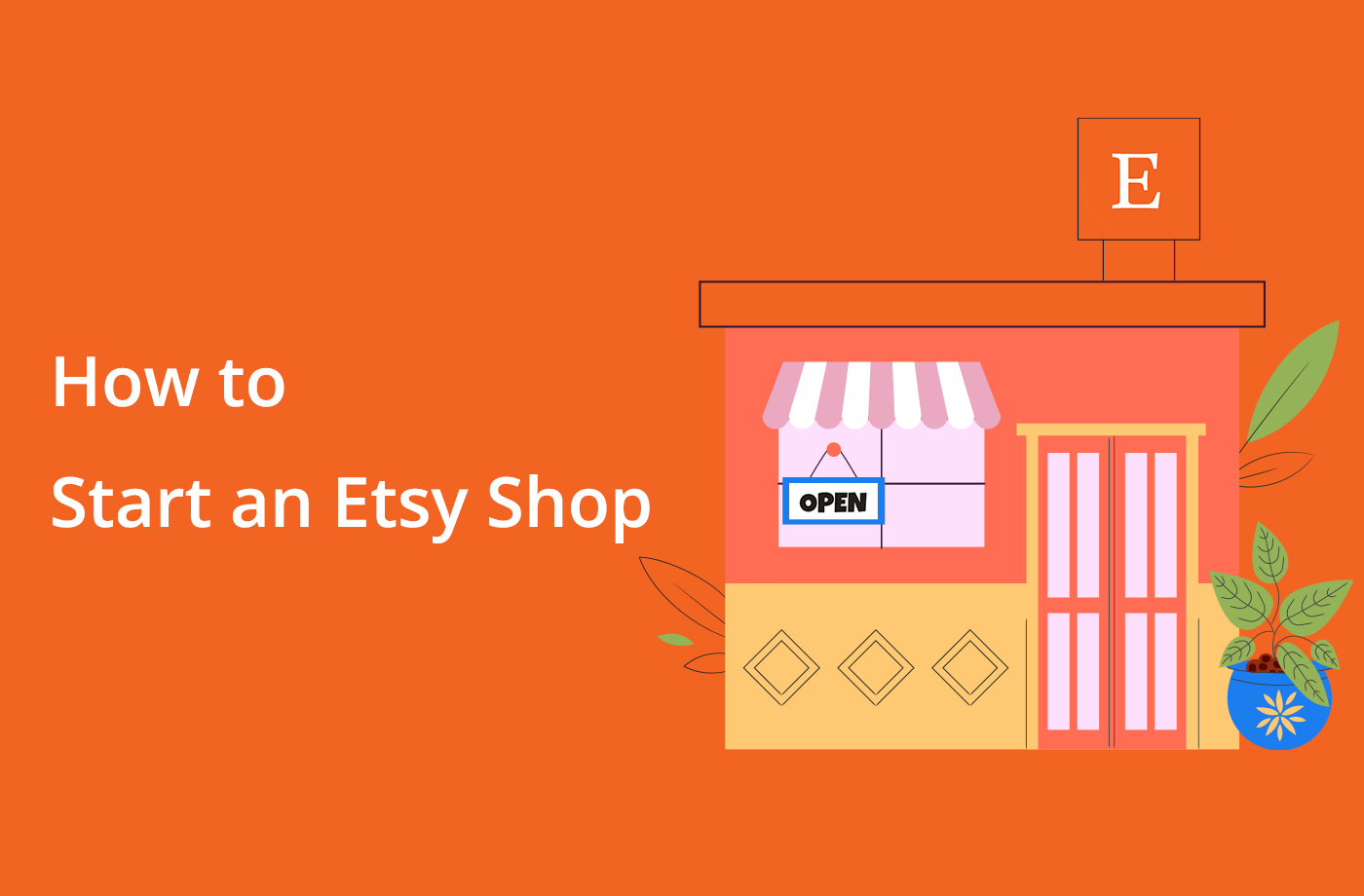
0 Comments